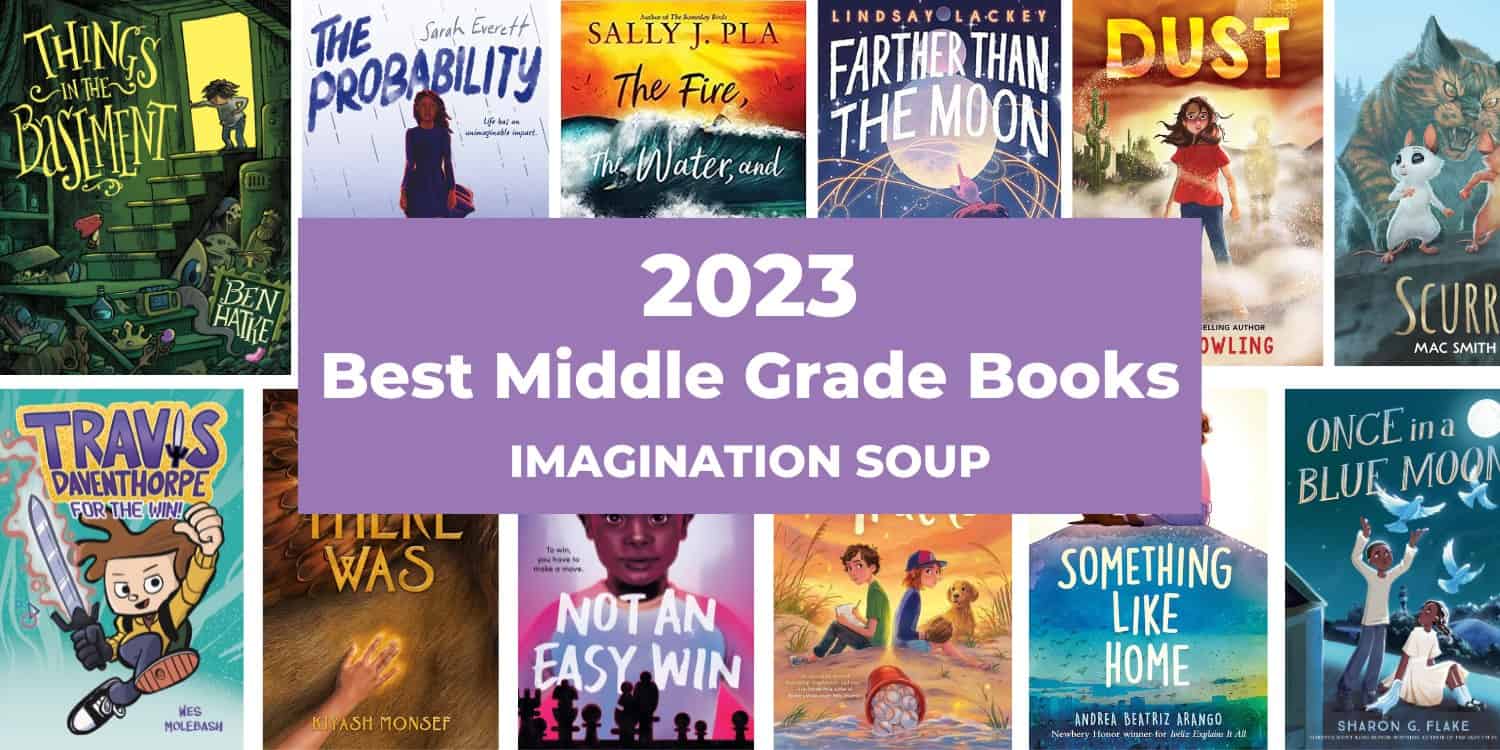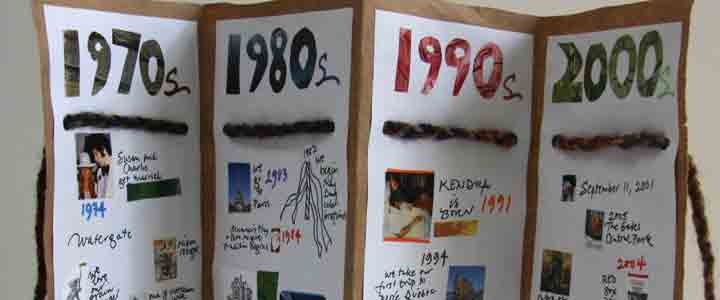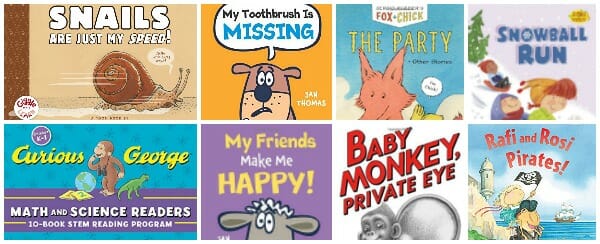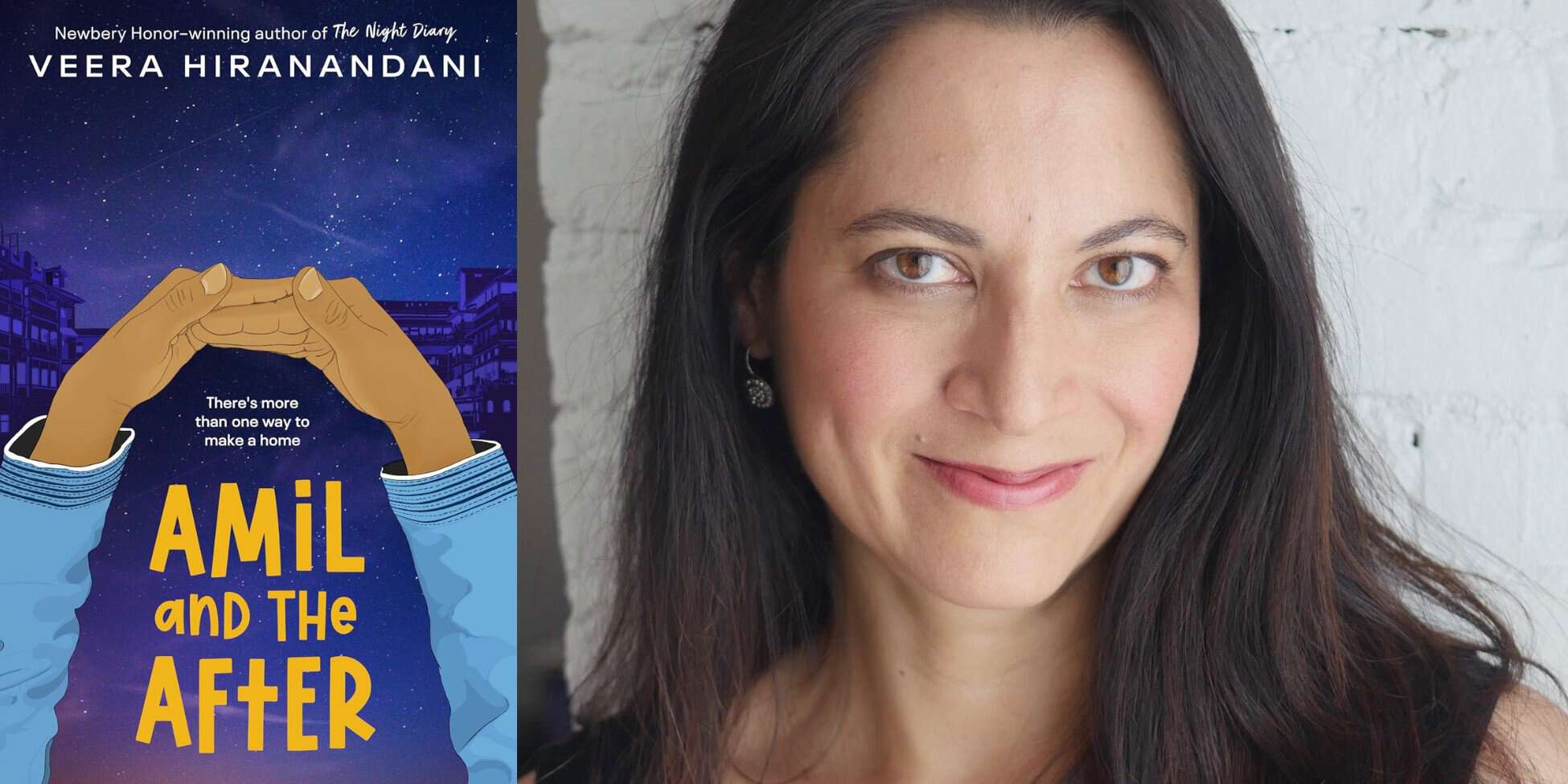35 Best Nonfiction Books of 2023 for Kids
This post may contain affiliate links.
I’ve said it before, and I’ll say it again–kids MUST read nonfiction! So why not start with these best nonfiction books of 2023?

Reading nonfiction builds the very important skill of reading for meaning. When I taught elementary grades, most of my readers were higher in fictional reading comprehension than they were in expository reading comprehension. Why? A lack of practice reading nonfiction!
Practice makes progress– so start reading nonfiction early and often.

I’ve found these nonfiction books to meet my selection criteria of the following:
- non-didactic
- skillful writing that explains concepts in kid-friendly language
- just right amount of text to pictures (for picture books)
- interesting
- well-researched, accurate information
I can’t wait to hear what you think of these best nonfiction books of 2023.
Which are your favorite?
Best Children’s Nonfiction Books of 2023
Picture Books, Ages 3 – 8

All About the Heart written by Dr Remi Kowalski, illustrated by Tonia Composto
BODY
Learn all about the heart, the different sizes, animals that don’t have one, its protection, and how it works. Inviting graphic designs pop off the page with blues and reds as you read the kid-friendly body information about the beating of the heart, where the blood goes, and how to take care of it. Excellent.

Not a Monster by Claudia Guadalupe Martinez, illustrated by Laura Gonzalez
ANIMALS / ENDANGERED ANIMALS / SPANISH COLORS
As you learn about the not-a-monster axolotl, you’ll also learn the color words in Spanish. Watch the egg to growing fins, the color roja, then swim under a moon the color blanca. See the axolotl search for food among the roots of flowers rosados. Readers will read about these adorable salamander creatures, their behaviors, and how pollution is affecting their canal habitat in Mexico City. Bravo for this lovely picture book that does triple duty — entertains kids, educates us about the axolotl, and teaches us about los colores!

Food for the Future: Sustainable Farms Around the World by Mia Wenjen, illustrated by Robert Sae-Heng
FOOD / ENVIRONMENTALISM
Written in rhyme, learn about how different places around the world have created sustainable farms — and why it is important. A rooftop garden grows food in the USA. Tree-shaped gardens collect rainwater and make solar power in Singapore. Underwater, greenhouse pods grow gardens in Italy. Back matter explains more about sustainable farming, food justice, a map of the places in the book, and gives information about each sustainable farm practice.

Animals in Pants by Suzy Levinson, illustrated by Kristen & Kevin Howdeshell
FUNNY POEMS
These funny poems will delight readers with their rhyming and silliness. Manatees in dungarees, kangaroos in jumpsuits, giraffes in kilts, and spiders who put on their pants one leg, one leg, one leg, times eight at a time.

I Am Made of Mountains by Alexandra S. D. Hinrichs, illustrated by Vivian Mineker
NATURE (INFORMATIONAL FICTION)
A child narrates in first person point of view as if he were the nature in the U.S. national parks–personified, active, and growing with beautiful imagery. “I am made of sunrise, sleepy promises that tumble.” Each spread features a different park, like Olympic National Park, Washington, and Death Valley National Park, Nevada. “I am made of wind, bellowing on my way. I blow through caves, bend down blades, make prairies swoop and sway.” I’m already planning my trips, will your kids want to do the same?
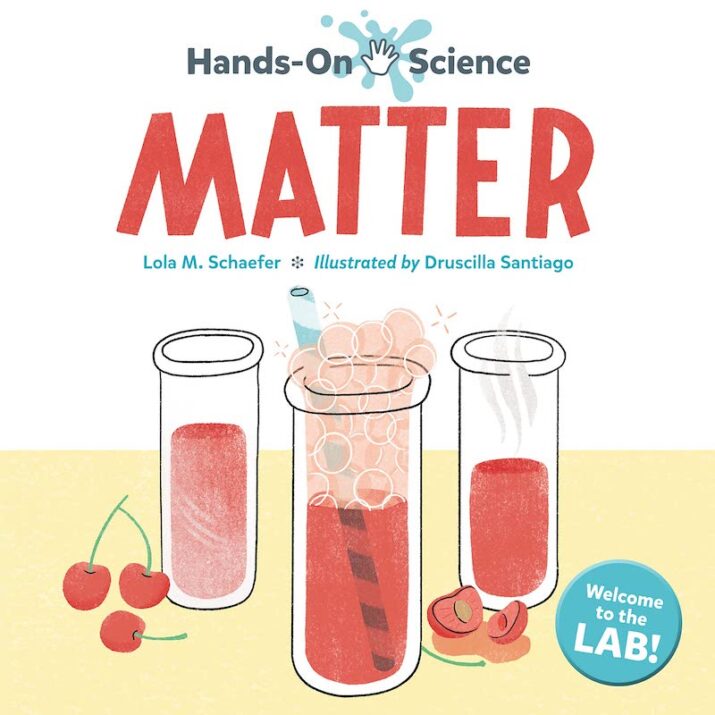
Matter (Hands-On Science) by Lola M. Schaefer, illustrated by Druscilla Santiago
CHEMISTRY
This picture book is a fantastic introduction to chemistry with clear text and illustrations. Simple, interactive experiments show children hands-on examples of the states of matter from solid to gas to liquid that kids can do at home as they read and in real life. For example, “put” the sugar into juice and watch it dissolve. Next, place the juice in the freezer and close the door, aka. turn the page. While you wait, you can predict what will happen by tapping on the picture showing what you think might happen to the juice in the freezer. You’ll turn the page to see…it’s solid ice! Isn’t that brilliant and interactive!?

You Are a Raccoon! by Laurie Ann Thompson, illustrated by Jay Fleck
ANIMALS
Written in the second person point of view, you are a raccoon. As you read, you’ll learn about your family and den and sounds. Read about getting bigger, finding food, and waking at night with other nocturnal animals. Playful verbs invite you to act out raccoon actions. A must read for preschoolers; it’s informative, interactive, and fun.
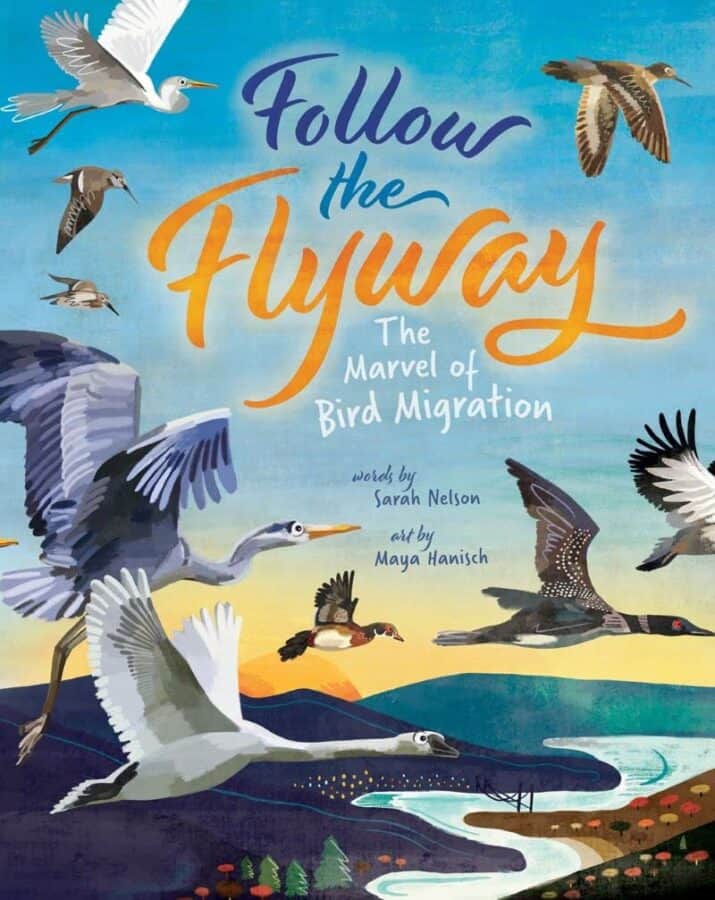
Follow the Flyway The Marvel of Bird Migration written by Sarah Nelson, illustrated by Maya Hanisch
BIRDS
Rhyming, lyrical text with gorgeous illustrations shows eggs hatching into bald and fuzzy chicks learning to quack and honk and FLY! As the weather turns to fall, the birds lift into the ancient flyway, migrating south. They soar up and on and on with the winds, an invisible ribbon pulling them. Back matter gives more information about migration, flyways, and how we can help migratory birds. It also defines the birds illustrated in the book, including mallards, common loons, Egrets, and Dunlins.

Stand as Tall as the Trees: How an Amazonian Community Protected the Rain Forest written by Patricia Gualinga and Laura Resau, illustrated by Vanessa Jaramillo
BIOGRAPHY / AUTOBIOGRAPHY / RAINFOREST
Beautifully crafted with emotional resonance, get inspired by this true story of Patricia Gualinga’s life. Paty is a Kichwa girl who lives deep in the rain forest of Ecuador, a place alive with “trees towering, vines winding, and frogs singing” and the mystical beings who rule the forest — the Amazanga. Paty moves to the noisy city for her education. But when Paty’s forest home is destroyed by a greedy company, she helps her people gather, unite, and protest, making the destructive company leave the forest! Heartfelt writing and luminous illustrations make this a memorable biography (autobiography) that shows how one person can make a difference in the world!

Stone Age Beasts written by Ben Lerwill, illustrated by Grahame Baker-Smith
ANIMALS
Kids will love this interesting oversized book about the cool creatures from the Stone Age. Each two-page spread is filled with a mesmerizing illustration and accompanied by fascinating descriptions of the creature along with a sidebar of facts, including a world map of its location. For Siberian Unicorn, the author writes, “Unicorns in fairy tales are normally dainty and elegant, but this spectacular real-life beast was a gigantic mass of fur and muscle.” Read about the Wolly Mammoth, Elephant Bird, Wonambi, Saber-Toothed Cat, Cave Lion, Dire Wolf, and more! A new favorite!!

Supermoms! by Heather Lang and Jamie Harper, illustrated by Jamie Harper
ANIMAL MOMS
Did you know animals are moms, too? And they make safe, comfy homes like the groundhogs and red-knobbed hornbill. They’re creative with transportation — just look at a wolf spider mom carrying her spiderlings on her back or an American alligator carrying her hatchlings in her mouth. Fascinating facts about animal supermoms are paired with engaging comic-style illustrations.

We Are Starlings Inside the Mesmerizing Magic of a Murmuration by Robert Furrow and Donna Jo Napoli, illustrated by Marc Martin
BIRDS
Narrated from the point of view of “we”…we are part of the starling flock. When it gets cold, we take to the sky. We are joined by more. We are hundreds, thousands, millions of us flying together, making a murmuring sound, becoming a murmuration. The flock flies together, escaping predators; the flock swirls, dances, and lands…plop! Then, the starlings feed and roost together. Gorgeous watercolor illustrators capture the dark starling bodies against a red, yellow, blue, and orange sky. The creators of We are Starlings capture the magical essence of these enchanting birds.

Whale Fall Exploring an Ocean-Floor Ecosystem by Melissa Stewart, illustrated by Rob Dunlavey
OCEAN ANIMAL LIFE
Do you know about a whale fall and the creatures who feed on a whale’s carcass? Stewart shares the process as a sequential, lyrical story starting when the whale dies and continuing with scavengers arriving to eat different parts. “Sleeper sharks smell the whale, too, but they swim slowly through the frigid water. When they arrive, they feast on skin and blubber.” The whale, in its death becomes food for other creatures—even its bones—for about 50 years, until every trace of the whale is gone. It’s pretty amazing!

Lights On! Glow-in-the-Dark Deep Ocean Creatures by Donna B. McKinney, illustrated by Daneilla Ferretti
OCEAN LIFE
Turn the book sideways to see the ocean from the sky and surface to the dark deeper waters. You’ll read about the ocean creatures who live where no sunlight reaches, like the pocket shark, Atolla jellyfish, and male fireworms. Kids will also love the interactive lift-the-flaps on each page that share more factual information! Lovely writing with onomatopoeia, lyrical verse, and vivid description makes this a beautiful and informative nonfiction text about the fascinating bioluminescent world of the ocean deep.

How Birds Sleep by David Obuchowski, illustrated by Sarah Pedry
BIRDS
Read about 20 different birds and where they sleep. From the Black-legged Kittiwake who sleeps on the choppy waves of the ocean to the Sandhill crane who sleeps on one leg while others in the flock watch for predators, this is a fascinating book about interesting birds and their sleeping habits. Add to that beautiful blue-colored illustrations, and you’ll feel cozy and sleepy while reading about these sleeping birds.

Cicada Symphony by Sue Fliess, illustrated by Gareth Lucas
BUGS
From their beginnings as nymphs below ground, this exciting adventure shows the cicada life cycle and I love it! Large text shares a narrative story: “To the surface, up they go. No one tells them. They just know. Gripping tight for one last change. Split. Pop! Wriggle. Looking strange.” Smaller text with informational facts peppers the pages, too. “Cicadas can be as noisy as a lawnmower, motorcycle, or chainsaw.” This impressive book will appeal to all readers and parents.

The Little Books of the Little Brontes written by Sara O’Leary
Gorgeous, earth-toned illustrations capture the historical feeling of this biography, written like a fictional story. It’s the charming story of a family of girls who have big hardships and big imaginations. Their lives are made better by stories — the novels they read and the stories they tell and write, including tiny books that they create. “This is the story of the little Brontes, who lived in a house on the edge of the wild moors–and also in a world of their own imagining.” The back matter shares directions for making your own little books and includes photographs of the Brontes’ actual little books.
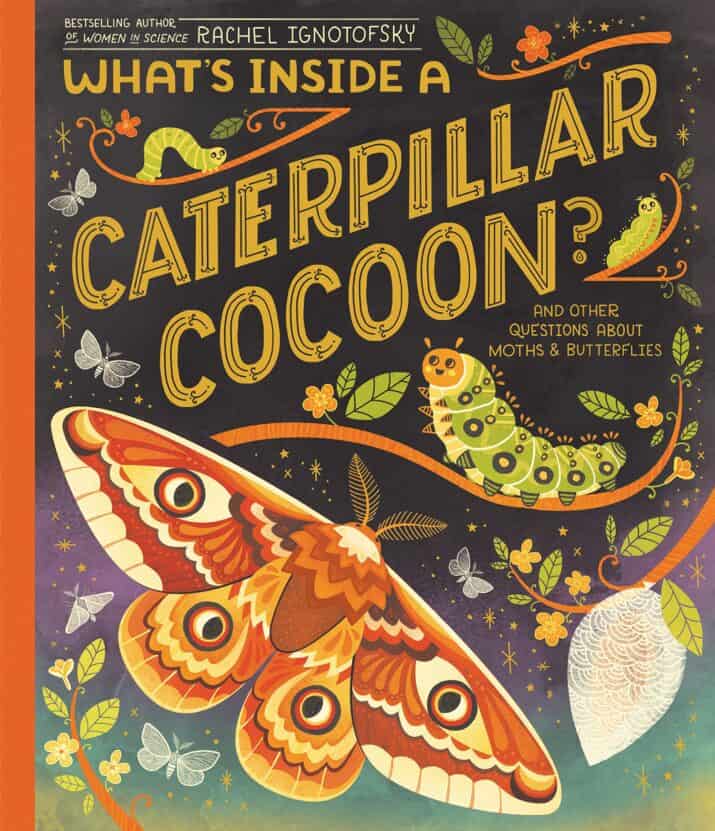
What’s Inside a Caterpillar Cocoon? and Other Questions About Moths & Butterflies by Rachel Ignotofsky
BUTTERFLIES & MOTHS
Just wait until you see the gorgeous illustrations throughout this book. I could frame them all! Learn all about moths and butterflies, starting with their differences, their life stages, their metamorphosis, their anatomy, and more interesting information about their diet, mating, and spreading pollen. Kids will love reading about these important insects. Perfect for primary-grade classrooms and homes.
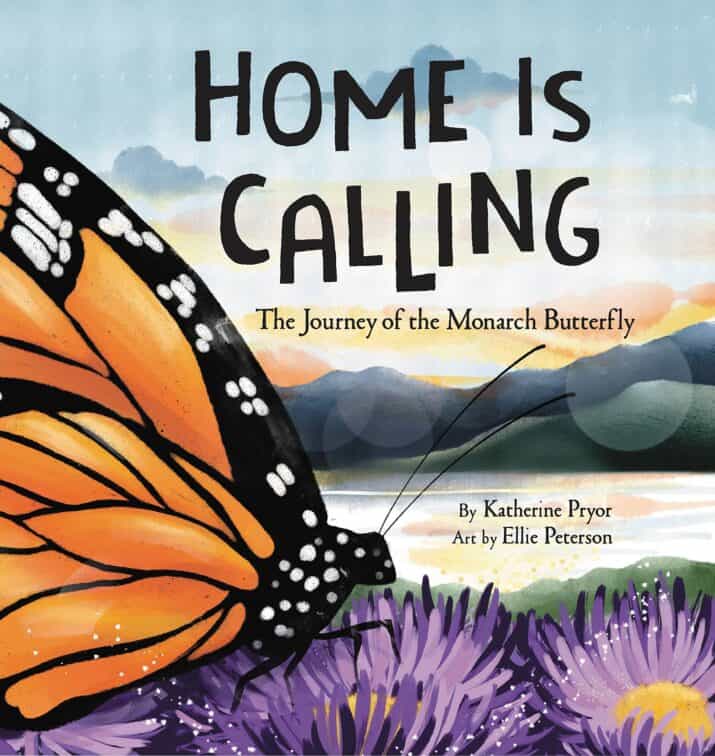
Home Is Calling The Journey of the Monarch Butterfly written by Katherine Pryor, illustrated by Ellie Peterson
BUTTERFLIES
This exceptional picture book shows the monarch butterflies’ long journey, traveling day after day to a new home, distant relatives, and safety. Written from the “we” point of view, the butterflies see sunsets and sunrises, sunsets and sunrises. They fly and fly, feast and drink, shelter and huddle, soar and ride the wind. After two months, they arrive, safe at last, to their new home with all the other orange and black butterflies!! The stunning illustrated pages are filled with monarchs in motion.

Deep, Deep Down The Secret Underwater Poetry of the Mariana Trench by Lydia Lukidis, illustrated by Juan Calle
DEEP OCEAN
Sensory descriptive writing takes us on a submarine deep, deep down into the Mariana Trench with its bone-chilling cold, earthquakes, monstrous fish, and unique plants. Both lyrical narration and informational expository text teach readers about the murky depths. I adore everything about this gem of a nonfiction book!

Darwin’s Super-Pooping Worm Spectacular by Polly Owen, illustrated by Gwen Millward
FAMOUS SCIENTIST
Charles Darwin knew that earthworms were special–he just had to prove it. So he used the scientific method to hypothesize, test, and observe the worms. He realized that the worms were special because of their poop. Worm poop helps plants grow and that is poop-tastic! Who knew!? This book is sure to be popular with kids and adults — it’s fun and informative.
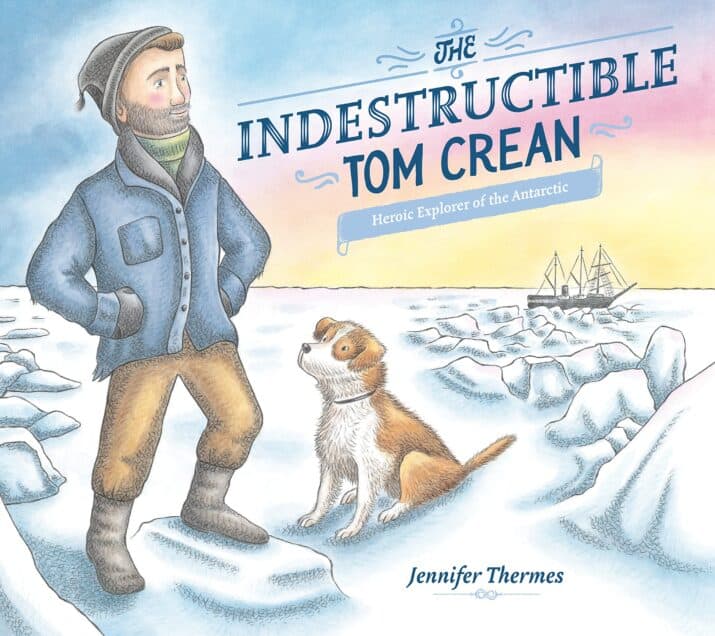
The Indestructible Tom Crean by Jennifer Thermes
Kudos to author/illustrator Jennifer Thermes! She’s made Tom Crean’s biography into a mesmerizing, heart-pounding adventure of a story — which it was. Tom’s a sailor who takes three trips to Antarctica, the most perilous being the famous Endurance voyage with Captain Shakelford. Their ship freezes and sinks. Survival seems unlikely. But somehow, the crew makes it to land, where they climb through a glacier range to get help. Incredible writing with stunning illustrations.

One Tiny Treefrog: A Countdown to Survival by Tony Piedra and Mackenzie Joy
COUNTING / FROGS
Count backward from ten to one as you watch a Costa Rican red-eyed treefrog grow from an egg into a tadpole and, later, into a frog. Gorgeous yellow-green illustrations will captivate readers. Back matter shares about the treefrog, other Costa Rican animals, and other scientific facts.
Join other teachers, parents, librarians, and grandparents who receive my newsletter of book reviews and learning resources.
Middle Grade Nonfiction Books, Ages 8 – 12

Where the Weird Things Are: An Ocean Twilight Zone Adventure by Zoleka Filander, illustrated by Patricia Hooning
OCEAN
A personified underwater explorer robot named Meso narrates his adventure deep in the ocean. He speaks to the creatures he meets, and they tell him about themselves. Filled with lots of banter and dialogue, the result is enjoyable and playful while being informational. (This is informational fiction — not nonfiction.)

Search for a Giant Squid: Pick Your Path by Amy Seto Forrester & Andy Chou Musser
CHOOSE YOUR OWN ADVENTURE / OCEAN ANIMALS
I love this choose your own adventure informational fiction book (nonfiction adjacent) and so will kids. Join an expedition on a dive to the deepest ocean depths to search for a giant squid. Choose which pilot to be, the submersible you’ll use, and the dive site, and then start your adventure. What will you discover? What will you do with mechanical problems or bad weather?

LOL 101: A Kid’s Guide to Writing Jokes by David Roth and Rinee Shah, illustrated by Rinee Shah
JOKES FOR KIDS
What an incredible teaching guide to writing your own jokes! This book guides readers in understanding and applying humor from wordplay, the rule of 3, exaggeration, joke delivery, visual humor, and tips for flop jokes. The examples are so helpful, too. Think about the sound a duck makes — and what word sounds like the word quack. Next, the authors explain how to write a joke where you play with the word quack to write a funny joke about a duck’s favorite snack. (answer: cheese and quackers.) I highly recommend this children’s book about making up jokes.

A Day in the Life of an Astronaut, Mars, and the Distant Stars by Mike Barfield and Jess Bradley
SOLAR SYSTEM
Learn about the solar system in this nonfiction comic book. The day in the life stories are first-person personified stories from the point of view of things like a Death Cloud, Meteorite, and Nebula. Packed full of information, the other story formats include bigger picture sections and secret diaries. For example, you’ll like reading the secret diary of a space monkey. Honestly, it’s amazing how much information this book teaches readers about space and how appealing it is!

Norse Mythology: Enter a world of gods, giants, monsters, and heroes by Tom Birkett, illustrated by Isabella Mazzanti
Each of the 30 Norse featured characters has its own dynamically illustrated portrait along with a full page of descriptive information explaining the character’s background, skills and features, and a story. Whether it’s Loki in the lava-filled fortress, the Valkeries watching over every battle in the world, or Gullveig moving between homes and teaching women magic arts, you’ll meet gods and monsters in the middle of their stories.

A Natural History of Magical Beasts by Emily Hawkins, illustrated by Jessica Roux
For fans of fantasy and magical creatures like me, this book is a must-own! It’s filled with the coolest creatures of lore and legends. Each creature includes an introduction and description, plus information about its habitat, region, features, size, diet, and behavior. Even more fun is the diary entries from the intrepid explorer inviting you along. Besides loving the format and writing, I love that the book includes other cultures besides European mythical beasts!

The Mona Lisa Vanishes: A Legendary Painter, a Shocking Heist, and the Birth of a Global Celebrity written by Nicholas Day, illustrated by Brett Helquist
NONFICTION
You will love the incredible writing, the fun illustrations, the biographical information about the curious, brilliant, and distractable Leonardo Da Vinci, the other art heists from the poorly guarded Louvre (one involving Pablo Picasso), the burgeoning science of fingerprints to replace France’s ear-measuring methodology and the surprising, eventual discovery of the Mona Lisa. Interestingly, the Mona Lisa wasn’t a well-known painting until this art heist in 1911. And the Louvre wasn’t well-attended until after this dramatic theft. The theft was dramatic because the thief simply walked out with the stolen painting tucked under his shirt. Highly recommended!
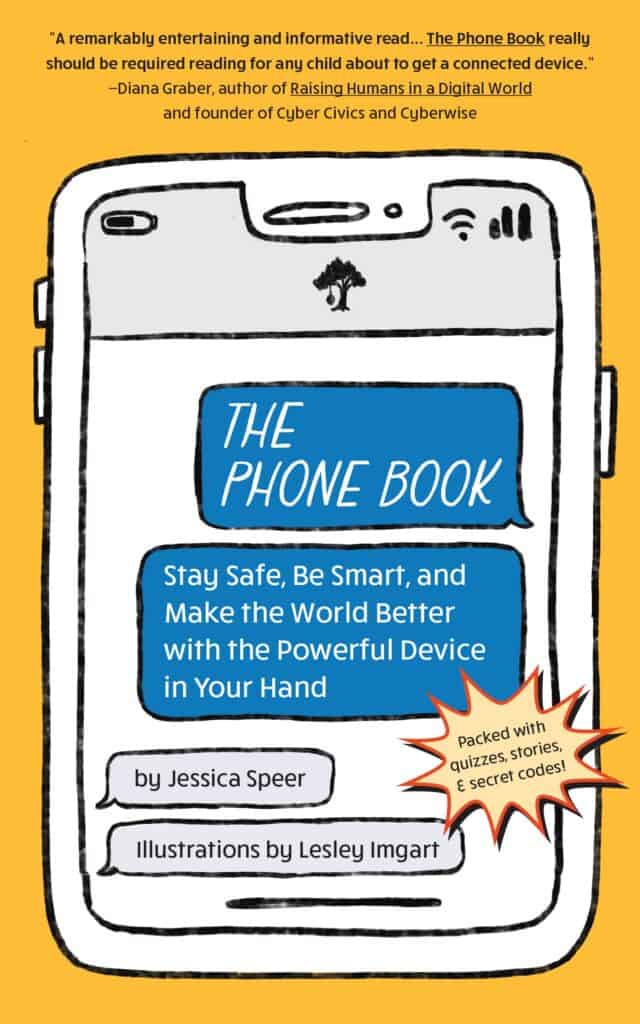
The Phone Book by Jessica Speer, illustrated by Lesley Imgart
CELL PHONE SAFETY & USE
Stories, questions, information, quotes, definitions, techy tidbit, tests *true or false, reality check, straight talk from teens, weird facts, checklists, secret codes, and activities make this an exciting, interactive book to read — that may change lives for the better. Yes, this little book is packed! For example, read about a dating situation with a text that got the police involved. Learn the definition of a digital footprint, then test your knowledge about digital footprints by playing “You Be the Judge” with online photos from person A or person B. Who would you hire? Besides being an amazing resource that parents and teachers can use with their tweens and teens, I love the text, size, and paper choice. It’s super appealing and a great curriculum for information literacy.

The Deep! Wild Life at the Ocean’s Darkest Depths by Lindsey Leigh
OCEAN
What an engaging dive into the ocean! Read about the ocean layers and the cool creatures who live in each ocean zone. The unique handwritten font instead of a traditional font gives the feeling of waves and playfulness. Cartoon illustrations show interesting creatures like the barreleye fish, the prambug, the hagfish, and the tripod fish. And the dialogue bubbles of conversational creatures only add to the genius of this eye-catching book. I predict this will be very popular with middle grade readers!

How Do Meerkats Order Pizza? by Brooke Barker
SCIENTISTS AND ANIMALS
I love this engaging and informative book about scientists who specialize in specific areas of study — including meerkats studied by Dr. Marta Manser, Japanese macaques and bonobos studied by Dr. Cecile Sarabian, and lizards studied by Dr. Earyn McGee. The book is illustrated in comics with dialogue bubbles and handwritten text. It’s amazingly dense with factual information but remains easy to read, interesting, and appealing to the eye. Readers will want to pour over this book for days and learn about animals and scientists. Maybe it will inspire a new career trajectory…or just educate kids on more of the natural world.

Race Against Death by Deborah Hopkinson
NONFICTION
Zippy pacing with dialogue from first-person accounts, character arcs, and a true story arc makes this nonfiction book read like a narrative story. It’s well-organized and meticulously researched about what happened in the Philippines during World War II when the Phillippines fell to the Japanese, the US and Philippine soldiers and citizens were taken into horrific Prisoner of War camps. Notably, this book shares the contributions of women, including their underground resistance, which many books ignore. The historical events fascinated me and I predict your readers will also be fascinated. Note: This is about the violence of war and includes soldier language (damn, bastards), but it’s not detailed or salacious and is appropriate for middle-grade readers who aren’t bothered by either.
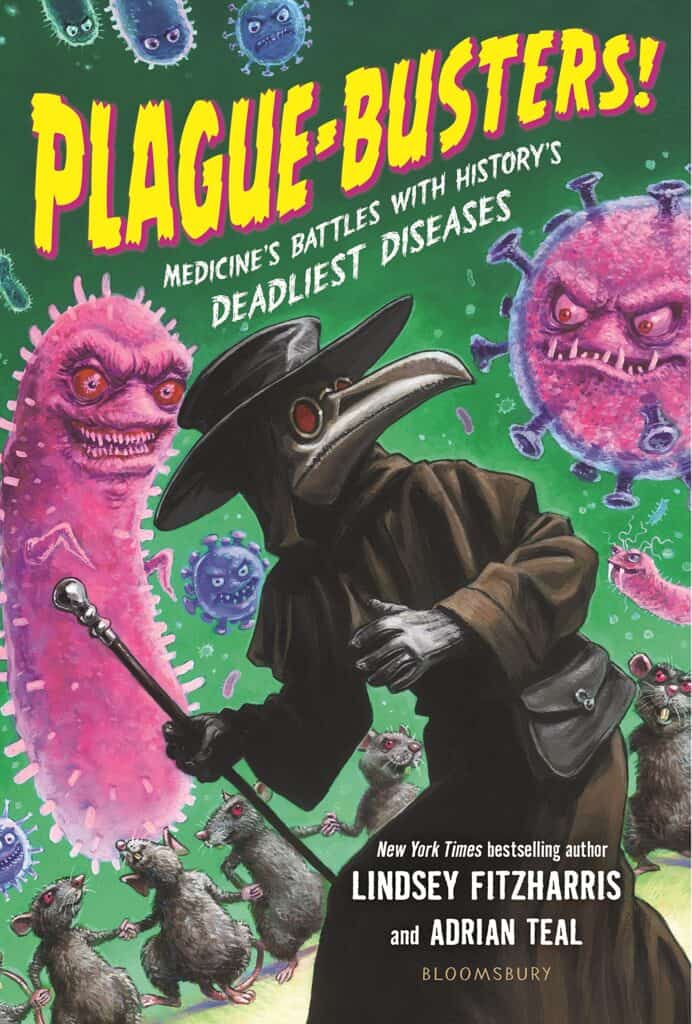
Plague Busters! Medicine’s Battles with History’s Deadliest Diseases by Lindsey Fitzharris and Adrian Teal
HISTORICAL DISEASES
Well-written and fascinating, in this nonfiction book, middle grade readers will learn about the deadliest diseases throughout history, from The Black Death to Scurvy. Each disease is explored in a full chapter with stories of people affected, remedy options (which were generally quite awful!), the history of the disease, including inventions and innovations in understanding and treatment, and famous deaths from the disease. You’ll read about people like Louis Pasteur, who found a treatment for rabies (a deadly disease from which Edgar Allen Poe died), and John Snow, who figured out how cholera was spread. I loved this book and think your readers will, too. Also, who doesn’t need these facts for trivia night, anyway?

KEEP READING


